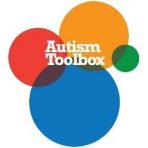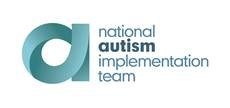Returning to school after a break – some ideas for autistic learners*
Many children and young people (and their parents!) may be excited about returning to school after a break but some might also have some worries about coming back. This mixture of emotions is to be expected and it is useful to focus on the positives and what they will already be familiar when they go back.
Many autistic learners will have had transition planning as part of their support but we are also aware that things might change again by the time we go back and so we cannot always share certainties and that can cause everyone frustration. Many autistic learners feel a constant level of anxiety which can be higher than for others, and this anxiety can increase very easily. As a result, some autistic learners and their families may have some additional worries and may require some individualised planning for returning to school.
The good news is that schools and early years settings already have lots of resources to support all sorts of transitions for autistic learners. The Educational Psychology Service are often involved in supporting transitions and we have developed some materials about transitions in general on our website and these can be found by clicking here. In addition, resources specific to children with additional support needs can be found on the Aberdeenshire ASN website and you can access this information here.
We have also been thinking about some top tips and things to think about for autistic learners in particular.
The 5 key messages we recommend for supporting autistic learners to reduce anxiety, support regulation and readiness to learn are:
- Say less – whilst there are lots of potential changes that you want to get across, it is important not to overwhelm the learner with too much information. Also remember that communication is more than verbal language. Think of all the messages/information from your body language and non-verbal cues. Body language/non-verbal cues are really important.
- Use visual supports – this supports understanding and reduces the amount of cognitive over load. Visuals can support independence, help us to manage change and can reduce anxiety.
- Practice and Prepare – this is the basis for most of our transition planning. Provide advance warning where you can and think about how much has changed and what has stayed the same. When strategies don’t work immediately it doesn’t mean the support isn’t correct and you need to continue to practice and prepare and repeat.
- Provide a safe space – consider the individual’s sensory needs. You may need to update any previous sensory assessment to take in to account any changes within the setting or with the young person’s recent experiences. Consider what would be the most appropriate safe space for each learner and that this isn’t always out of the classroom.
- Make the connection – engage with the child/young person, and their parent/carer. Some things may have changed and there may be some differences in the child/young person’s needs and abilities. Think about your mirror neuron system – use their language and expressions. Meet the young person where they are at now and don’t assume it is the same as when you last saw them.
In addition to our top tips, a number of organisations have been working hard on pulling together some ideas to support this transition back to school and we have gathered together some information for you on this website.

The Autism Toolbox has a dedicated section on their website for ideas to support Transitions for autistic learners and these can be found here.
The toolbox includes guidance and support for returning to school, in the following areas:
- Family engagement
- Personal transitions
- Home to Nursery School
- Nursery to Primary 1
- Class to Class
- Primary 7 to Secondary School
- School day transitions
- School to school
- Post-school
A key message from the Autism Toolbox is:
“Autistic learners and their families may need individualised planning for the transitions ahead. The approach taken needs to take account of context and be relevant for the learners school stage and developmental level.”

The National Autism Implementation Team have a dedicated section on their website about Supporting Autistic Learners Returning to school. The resources are available for the following different sectors:
- Early learning and childcare
- Primary
- Secondary
- parents/carers
In addition NAIT and Enquire have produced a parental guide to Talking to your school about Anxiety related non-attendance. This can be found on this link click here.
For all autistic learners, they stress the following Key Messages
- Ensure adjustments are anticipatory.
- Listen to parents.
- Provide predictability.
- Use visual supports.
- Provide a Safe Space.
- Plan for movement breaks.
- Seek to understand distress behaviour.
More detail and information can be found about these key messages by clicking here.
As we mentioned earlier on our section about making the connection, staff, parents/carers and children/young people have had their own unique experience of how they have spent time at home, school or in other settings. One of NAIT’s suggestions is that some kind of ‘returning to school info sharing’ takes place. It could include what the child/young person’s experience has been, or how they feel about returning to school and they have a suggested template for gathering this info. Other options are available for recording children and young people’s experiences of lockdown, such as the ones from the Salveson Mindroom Centre which can be found on Aberdeenshire’s ASN website here.

Locally Autism Understanding Scotland has also compiled some information about Supporting Transitions.
Children and Young People — Autism Understanding Scotland
As well as general guidance, they also have a document about meltdowns, elopements and shutdowns (the fight, flight, freeze response when we are overwhelmed). They point out that these responses may increase as children and young people return to settings. The strategies they suggest are also ones that parent/carers might adopt. They stress the following:
- Stay calm yourself.
- Try to remove anything that might have triggered the crisis point.
- Give them space but ensure they are safe.
They also stress how important it is to communicate and connect with the child/young person and their parent/carer. They provide an autism appropriate school checklist to enable an updated assessment of what is in place but their main message here is flexibility – being responsive and making the necessary adjustments.
*we use the term autistic learner or autistic children in line with the Autism Toolbox but we are aware that the complex nature of autism gives rise to a range of personal and professional perspectives and terminology preferences http://www.autismtoolbox.co.uk/understanding-autism-terminology

